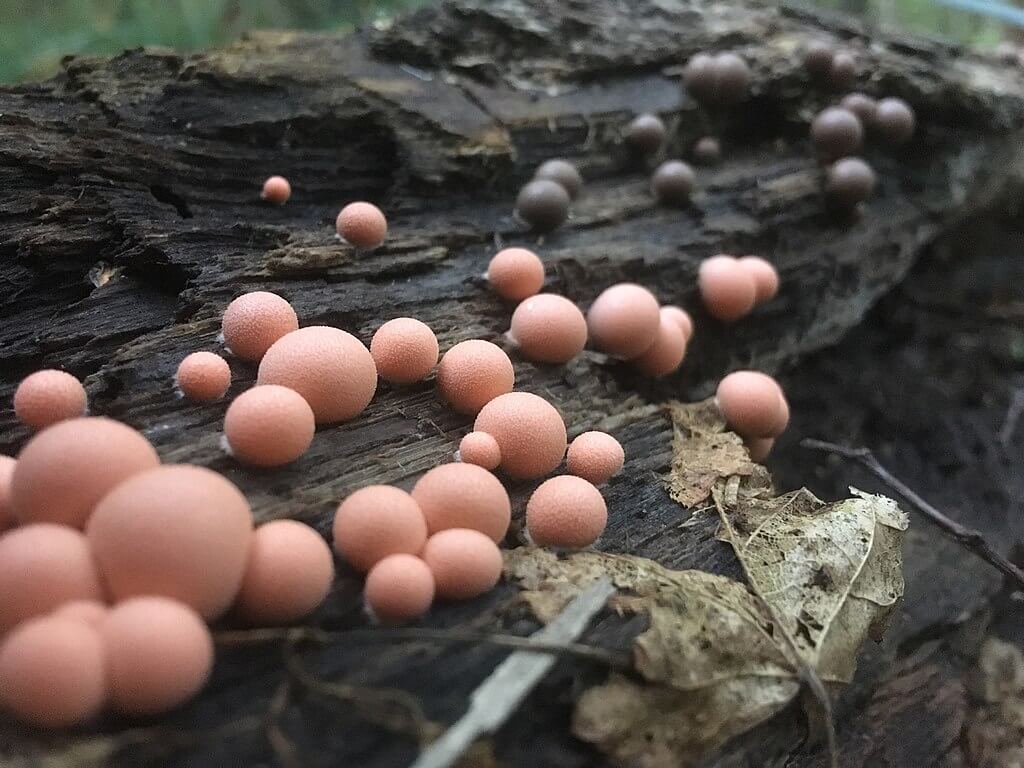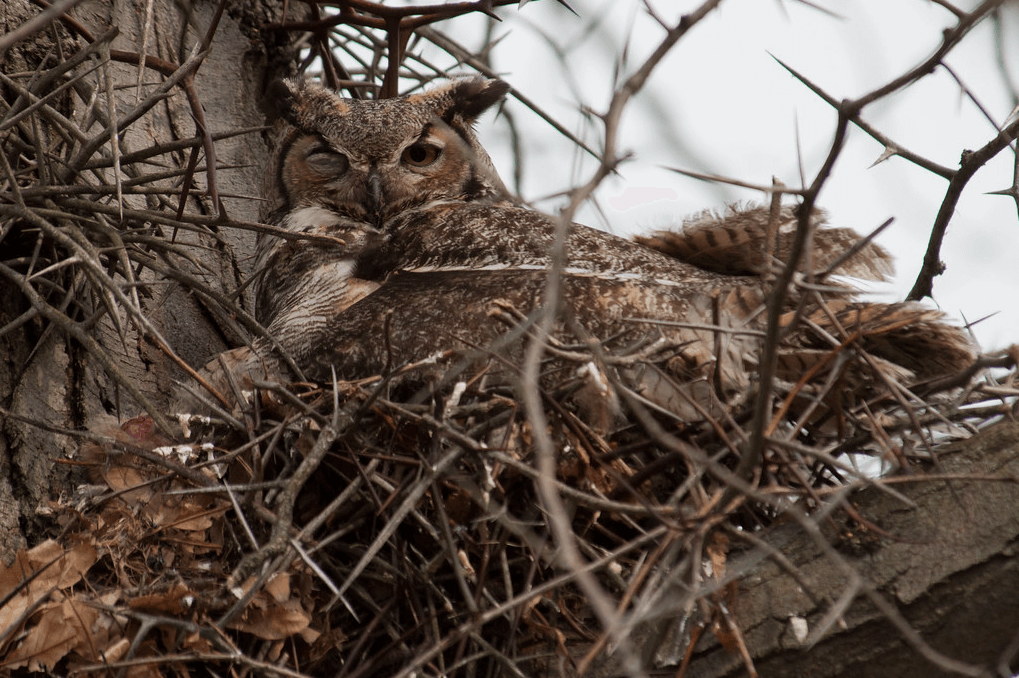Obscure Oozing Oddities: The Overlooked World Of Slime Molds
By Jan Yaeger
Broadcast on 11.2000, 10.2003, 08.2015, and 8.31 & 9.3.2022

Wolf’s milk slime mold, photo by Павлик Лисицын, CC 4.0.
Listen:
Walking through dry woods last September, I looked down at a fallen ponderosa pine. Stuck to its side was a cluster of small pink balls, the color of bubble gum and half the size of marbles. Looking closer, I saw brown globules there as well. Thinking I’d found some of the round mushrooms known as puffballs, I dug my pocket knife into the moist wood beneath them, looking for the web-like fungal strands that should underlie a puffball. I found…nothing. I dug some more. Still nothing. What was this stuff?
Later I learned that, regardless of its puffball-like appearance and its presence in my field guide to fungi, the specimen in question wasn’t a mushroom at all. It was Lycogala epidendrum, a member of a strange group of organisms known, rather unfortunately, as slime molds.
Slime molds are stubbornly mysterious. They are usually lumped in with fungi, but exhibit several traits ordinarily attributed to animals. One of these stands out above the others: slime molds travel. Individuals can be found creeping about like giant amoebas on logs, trees, leaf litter and just about anywhere else their bacterial food is found. Several years ago in Great Smoky Mountains National Park, the park newsletter issued daily bulletins about the progress of a slime mold that was oozing up the trunk of a tree near park headquarters at the rate of several inches a day.
Some slime molds have journeyed around the world, though not by oozing. They spread far and wide by dispersing their microscopic spores on the wind. The Lycogala epidendrum I encountered on an island in Flathead Lake has been found everywhere from Brazil to Barrow, Alaska. It may be one of the most cosmopolitan species on earth. Although slime molds generally live in cool, damp places, nearly 50 species have been reported in the desert southwest, living wherever they can find a tiny bit of moisture.
A slime mold spends most of its life as a wandering mass called a plasmodium. They are often colorless, but can be bright yellow, orange or red. Some live inside decaying logs and other plant material, while others crawl about on the surface. When it is time for a plasmodium to reproduce, it relocates to a drier and more exposed location. Gathering itself into a clump, it undergoes a remarkable transformation in which its entire body is changed into spore-producing structures. These can take on a wide variety of shapes and colors, including the small pink and brown globes I saw on the fallen pine.
Scientists who specialize in slime molds prefer to call them by the more technical name myxomycetes. Individual species are also referred to by their scientific names, and one author of a text on slime molds goes to far as to say that “myxomycetes do not have common names.”
Field guides, however, do list common names. I first knew my mystery mold by its English name, “wolf’s milk slime.” Perhaps scientists suppress the common names because they despair of ever fostering affection among the general public for organisms with monikers like “many-headed slime,” “yellow-fuzz cone slime,” or, worst of all, “dog vomit slime.” As you probably guessed, slime molds get their common names from their appearance. An unsettling number relate to food. You might encounter “red raspberry slime,” “carnival candy slime,” “pretzel slime,” “tapioca slime,” and even “scrambled egg slime.”
A spectacular display of this last species caused quite a stir in Texas in 1973, and even made the national news. Suburbanites awoke to find large pulsating yellow masses skulking on their lawns. Rumors flew about alien invaders and mutant bacteria. Fortunately, the yellow goo vanished before the National Guard could be mobilized.
Slimes molds are rarely on our minds, much less the news. When we walk through the woods, we tend to look for the large and spectacular. But I’m glad I looked down that day in September. I was reminded that the strange and obscure can be pretty spectacular as well.
Every week since 1991, Field Notes has inquired about Montana’s natural history. Field Notes are written by naturalists, students, and listeners about the puzzle-tree bark, eagle talons, woolly aphids, and giant puffballs of Western, Central and Southwestern Montana and aired weekly on Montana Public Radio.
Click here to read and listen to more Field Notes. Field Notes is available as a podcast! Subscribe on iTunes or wherever you listen to podcasts.
Interested in writing a Field Note? Contact Allison De Jong, Field Notes editor, at adejong [at] montananaturalist [dot] org or 406.327.0405.
Want to learn more about our programs as well as fun natural history facts and seasonal phenology? Sign up for our e-newsletter! You can also become a member and get discounts on our programs as well as free reciprocal admission to 300+ science centers in North America!












